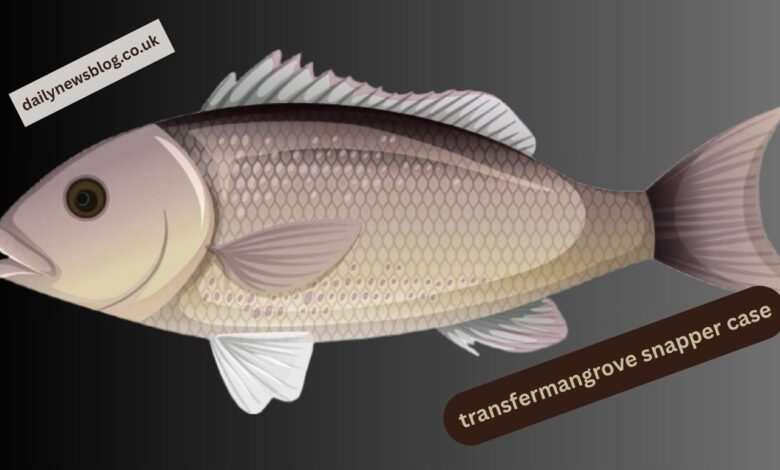You Won’t Believe How Easy It Is to Catch Mangrove Snapper: The Ultimate Guide

The mangrove snapper is one of the most popular saltwater game fish, known for its aggressive strikes, strong fight, and excellent eating qualities. Anglers from all over the Gulf of Mexico, Florida, the Caribbean, and the southeastern U.S. flock to mangrove-lined shores and reefs to catch this versatile snapper species. Whether you’re fishing from a boat, dock, or shore, the mangrove snapper provides plenty of action, making it a top choice for beginners and seasoned fishermen alike. In this comprehensive guide, we’ll dive into the biology, behavior, habitats, fishing techniques, and culinary delights of the mangrove snapper to help you become a confident angler targeting this prized fish.
What is a Mangrove Snapper?
The mangrove snapper (Lutjanus griseus), also commonly called the gray snapper, is a medium-sized snapper species inhabiting warm coastal waters of the western Atlantic, Caribbean Sea, and Gulf of Mexico. It’s easily recognized by its stout body, reddish to dark brown coloration, and the distinctive faint vertical stripes or spots on its sides. Mangrove snapper can grow up to 24 inches and weigh around 5-6 pounds, though most are caught between 12 and 18 inches.
These fish are opportunistic predators, feeding primarily on small baitfish, shrimp, crabs, and other crustaceans. The mangrove snapper’s powerful jaws and sharp teeth allow it to grasp and crush hard-shelled prey, making it an effective hunter. This species is also known for its remarkable adaptability, as it thrives in both clear offshore reefs and brackish waters near mangrove swamps and estuaries.
Why Are Mangrove Snapper So Popular?
Several reasons contribute to the mangrove snapper’s popularity among anglers. First, they are widely distributed and fairly abundant in coastal waters, making them accessible to many fishermen. Their willingness to bite on a wide range of baits—from live shrimp to artificial lures—means they are an ideal species to target regardless of your fishing style or experience.
Second, mangrove snapper are renowned for their feisty fight once hooked. They put up strong runs and aggressive head shakes, giving anglers an adrenaline-filled battle that’s satisfying but manageable on medium tackle. Lastly, mangrove snapper is prized for its delicious white meat, which is firm, mild, and flaky, perfect for a variety of recipes.
Best Places to Find Mangrove Snapper
The name “mangrove snapper” comes from the fish’s strong affinity for mangrove habitats. These intricate root systems provide shelter and abundant food sources, making them ideal hunting grounds for snapper. But mangrove snappers are not limited to just mangroves—they can be found near artificial structures like docks, jetties, wrecks, and reefs.
In Florida, the Gulf Coast, and the Caribbean, anglers commonly find mangrove snapper in shallow waters ranging from 10 to 60 feet deep. During warmer months, they tend to stay closer to shore in mangrove-lined creeks and estuaries. As temperatures cool, they often move offshore to deeper reefs and wrecks. Understanding these seasonal movements can help anglers target them more effectively.
How to Catch Mangrove Snapper
Gear and Tackle Tips
To catch mangrove snapper successfully, anglers should use medium-action rods paired with reels capable of holding 150 yards of 15-30 lb braided or monofilament line. Mangrove snapper have sharp teeth, so it’s advisable to use a fluorocarbon leader around 20 lb test to reduce bite-offs. A sensitive rod tip helps detect subtle bites common with this species.
Best Baits and Lures
Natural baits remain the top choice for mangrove snapper fishing. Fresh or live shrimp is often the go-to bait, but small pinfish, pilchards, squid, and small crabs also work well. These baits mimic the snapper’s natural diet and trigger aggressive strikes.
For lure fishing, soft plastics rigged on jig heads, bucktail jigs, and small spoons are effective, especially when bounced slowly near the bottom. Anglers also use small plugs and minnows during low-light periods for added success.
Fishing Techniques
Bottom fishing with bait near structure is the most productive way to catch mangrove snapper. Cast near mangrove roots, pilings, rocks, or reef edges, and let your bait sit close to the bottom. Because mangrove snapper bites can be cautious, maintain steady tension on the line and watch for subtle taps before setting the hook.
Another technique is slow jigging or “bouncing” artificial lures along the bottom. This imitates the movement of prey and can provoke aggressive strikes from nearby snappers. Fishing during dawn, dusk, or night can also increase catch rates, as mangrove snapper are more active feeders during these times.
Mangrove Snapper Regulations and Conservation
Mangrove snappers are subject to size and bag limits in many fishing regions to protect their populations and promote sustainable fishing. The minimum size limit is typically between 10 to 12 inches, and daily bag limits often cap at 5 fish per angler, though these regulations can vary.
Adhering to these regulations is vital to ensure healthy populations of mangrove snapper continue to thrive. Catch-and-release practices, especially for undersized or spawning fish, help maintain ecosystem balance. Responsible anglers also practice ethical fishing by minimizing habitat damage and properly handling fish to improve survival chances after release.
Preparing and Cooking Mangrove Snapper
One of the main reasons anglers target mangrove snapper is their exceptional eating quality. The flesh is lean, firm, and mild-flavored, making it versatile in the kitchen. Mangrove snapper fillets are perfect for grilling, baking, pan-frying, or broiling.
Simple preparations like seasoning with lemon, garlic, salt, and pepper bring out the fish’s natural sweetness. For a Caribbean twist, try marinating fillets in lime juice, chili, and fresh herbs before grilling. Mangrove snapper also works wonderfully in ceviche, fish tacos, or baked with a crust of herbs and breadcrumbs.
Cleaning a mangrove snapper involves scaling the fish and gutting it properly, ensuring the meat stays fresh and flavorful. Because of their moderate size, mangrove snapper are easy to fillet, which is ideal for serving family-sized meals.
Challenges When Fishing Mangrove Snapper
While mangrove snappers are generally easy to catch, anglers may encounter a few challenges. One common issue is line breakage caused by the fish’s sharp teeth and rough underwater structures. Using strong leaders and being prepared to handle snags can reduce tackle loss.
Another challenge is the snapper’s sometimes shy or tentative bites. Patience and sensitivity to line movement are critical, as early detection of a nibble increases your chances of a successful hookset.
Mangrove snapper also tend to congregate in areas that are popular with other fishermen, so pressure and overfishing can make them less active in some spots. Exploring less crowded mangrove areas or fishing during off-peak times can improve success.
FAQs About Mangrove Snapper
Is Mangrove Snapper Good to Eat?
Yes, mangrove snapper is highly regarded for its delicious, mild-flavored, flaky white meat.
What is Another Name for Mangrove Snapper?
It is also known as gray snapper due to its grayish coloration.
Is Mangrove Snapper a Sea Fish?
Yes, mangrove snappers are saltwater fish that live primarily in coastal marine environments.
Do Mangrove Snappers Have Teeth?
Yes, they have sharp teeth to help catch and consume their prey.
Is Snapper a Freshwater or Saltwater Fish?
Snappers, including mangrove snapper, are primarily saltwater species.
Is Mangrove Snapper Saltwater or Freshwater?
Mangrove snapper inhabit saltwater but tolerate brackish environments near mangroves.
How Big Do Mangrove Snapper Get?
They can grow up to 24 inches, with most caught between 12 and 18 inches.
When is the Best Time to Catch Mangrove Snapper?
Dawn, dusk, and nighttime are prime feeding times for mangrove snapper.
Can You Catch Mangrove Snapper from Shore?
Yes, fishing near mangroves, docks, and jetties from shore is very productive.
Conclusion
The mangrove snapper offers an exciting combination of accessibility, sporting challenge, and culinary reward, making it a favorite for saltwater anglers across its range. Its preference for mangrove-lined habitats and underwater structures means you don’t need to venture far offshore to find action-packed fishing opportunities.
By using the right gear, bait, and fishing techniques, you’ll quickly discover how easy it is to catch mangrove snapper. Plus, once you’ve enjoyed the fresh, mild taste of mangrove snapper fillets cooked at home, you’ll understand why this species is a staple among saltwater fishermen.
Remember to respect fishing regulations and practice sustainable fishing to ensure mangrove snapper continue to thrive for future generations of anglers. Whether you’re an experienced angler or just starting, mangrove snapper fishing offers a rewarding and enjoyable experience you won’t want to miss.
SEE MORE INFORMATION BY CLICKING HERE Dailynewsblog




